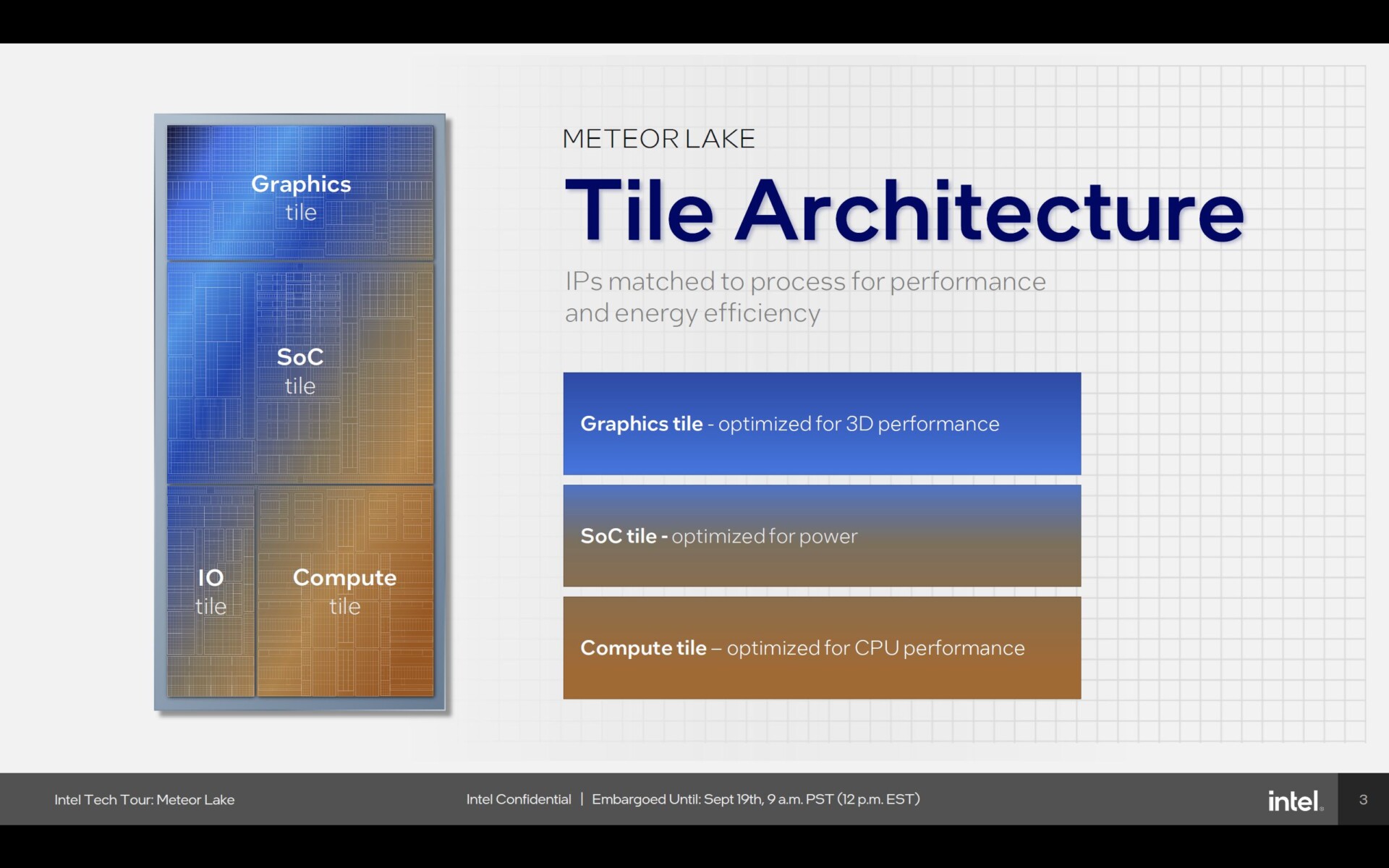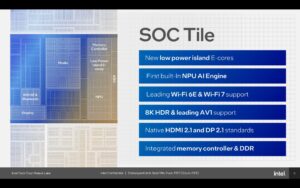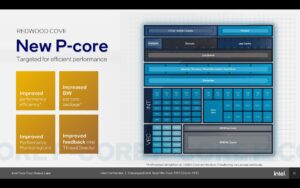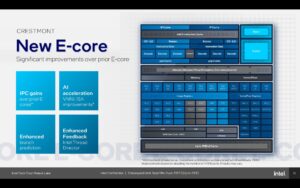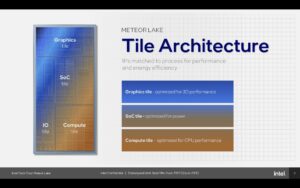Intel’s 14th Gen Meteor Lake is finally here and as it did with its 11th Gen chipset, Tiger Lake, the new processor is making its debut within the mobile space first. There’s the Raptor Lake Refresh for the desktop, yes, but they’re not the focus here.
Like all things new, Meteor Lake introduces many new things, features, and design. And with that, here’s the breakdown on what the series is rocking.
Foveros Unleashed

You’ve probably heard the name Foveros referenced by Intel several times in the past. As to what it is, Foveros is a new and advanced packaging technology that the chipmaker developed, first for Meteor Lake, and for the next several generations of processors to come, for as long as the technology is relevant.
One of the advantages to Foveros is that, unlike the previous generation Raptor Lake, it features very low-power and high density die-to-die connections. By comparison, it essentially allows Meteor Lake to provide lower power consumption with minimal overhead between partitions, all within a smaller tile package.
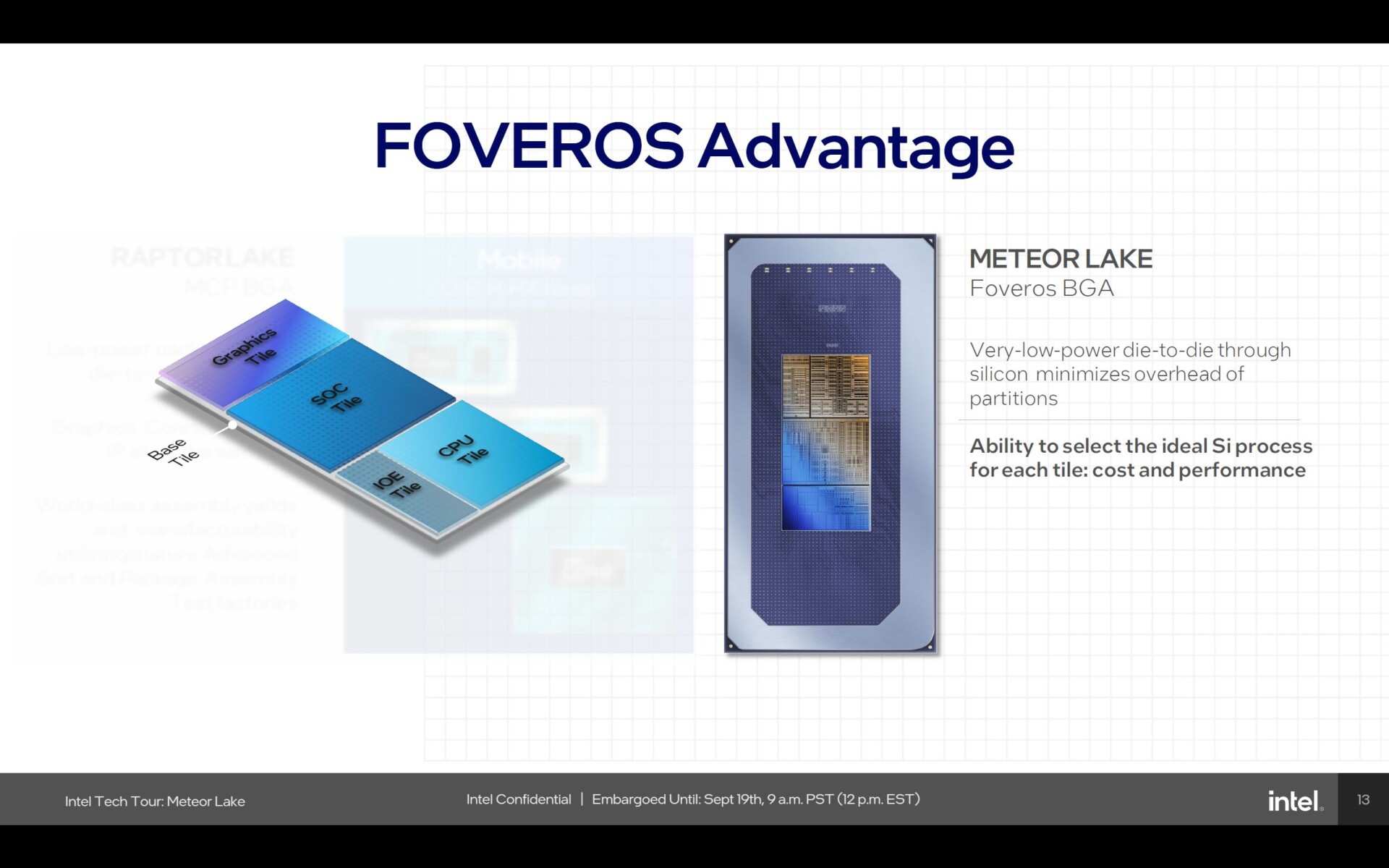
To get into the technical details, Foveros on Meteor Lake includes a 36u bump pitch with less than 1um trace width, a 160GB/s per millimetre bandwidth, and power consumption of less than 0.3 pJ per bit. Not only that, but the new chip also uses an embedded multi-die interconnect (EMIB) for Foveros.
New Processor, New Package, New Process Node
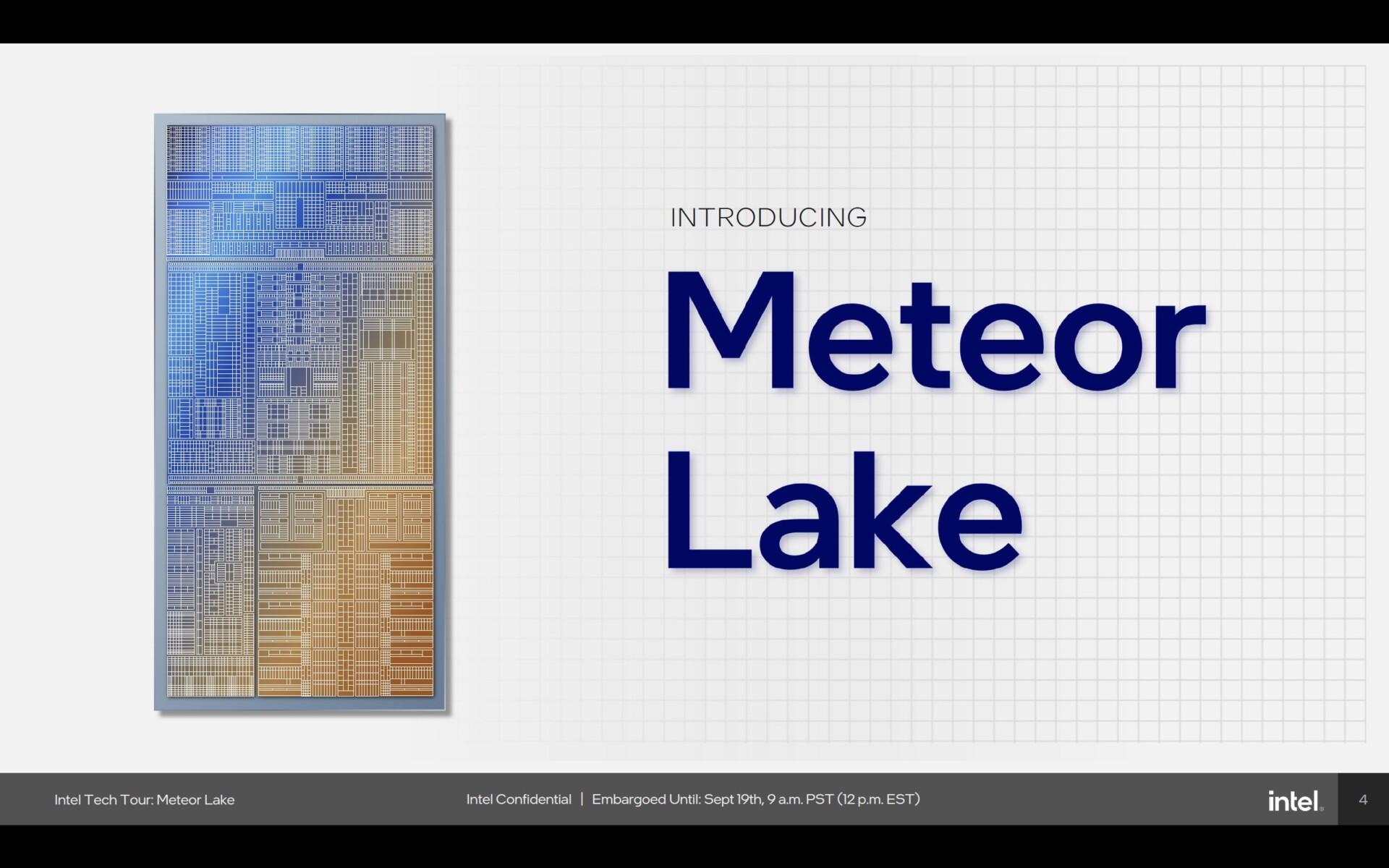
So, let’s break down the Meteor Lake SoC. Built using Intel’s new and self-titled Intel 4 process – it’s the chipmaker’s own naming convention for what is essentially a 7nm die lithography – it is the first set of chips built using EUV and will be the last generation to be built using the FinFET process.
That being said, the Intel 4 process for Meteor Lake also serves as a critical juncture for Intel, both allowing and enabling the chipmaker to move beyond Intel 7, a process node that it has used for the past two generations of chipsets, at this point.
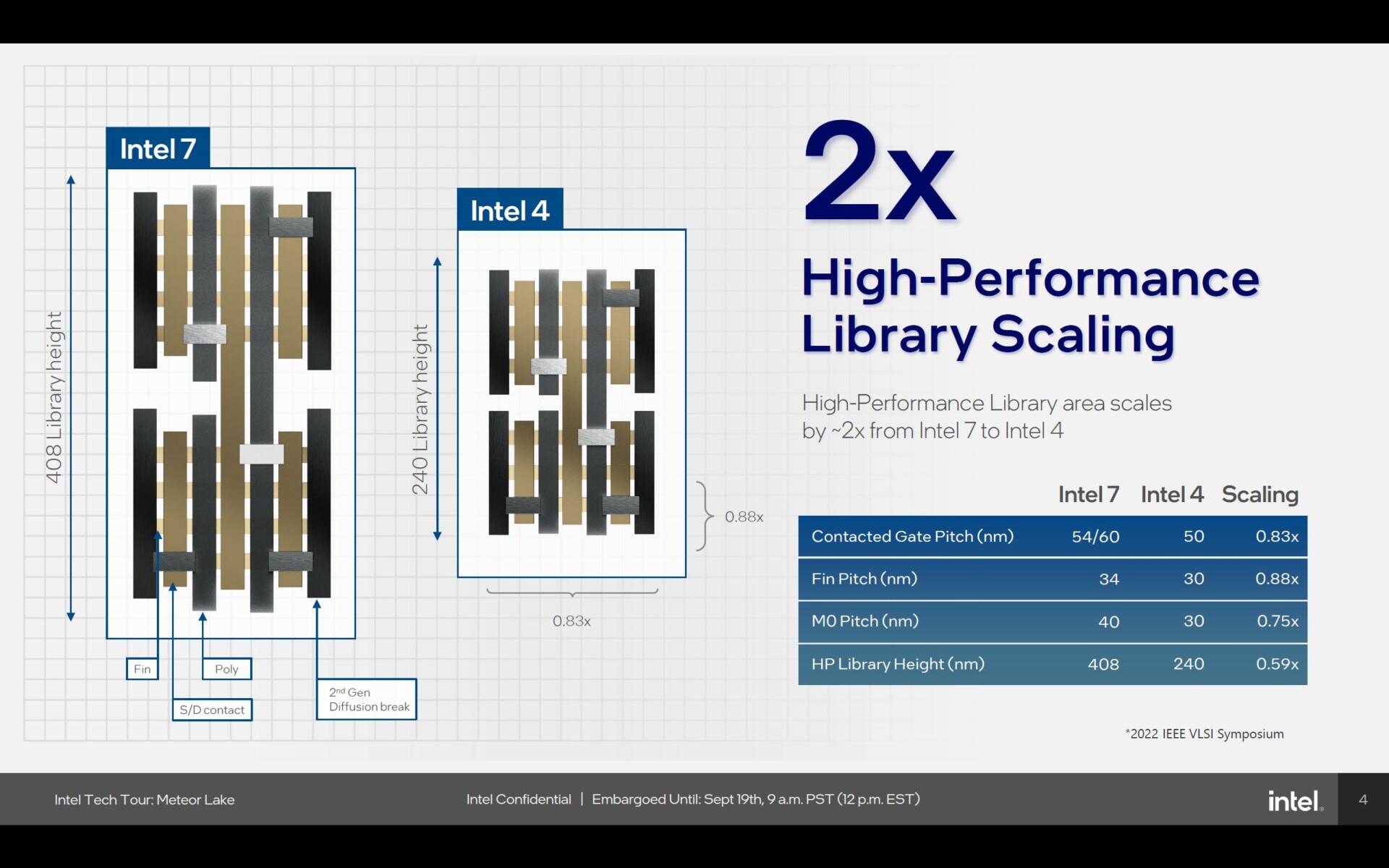
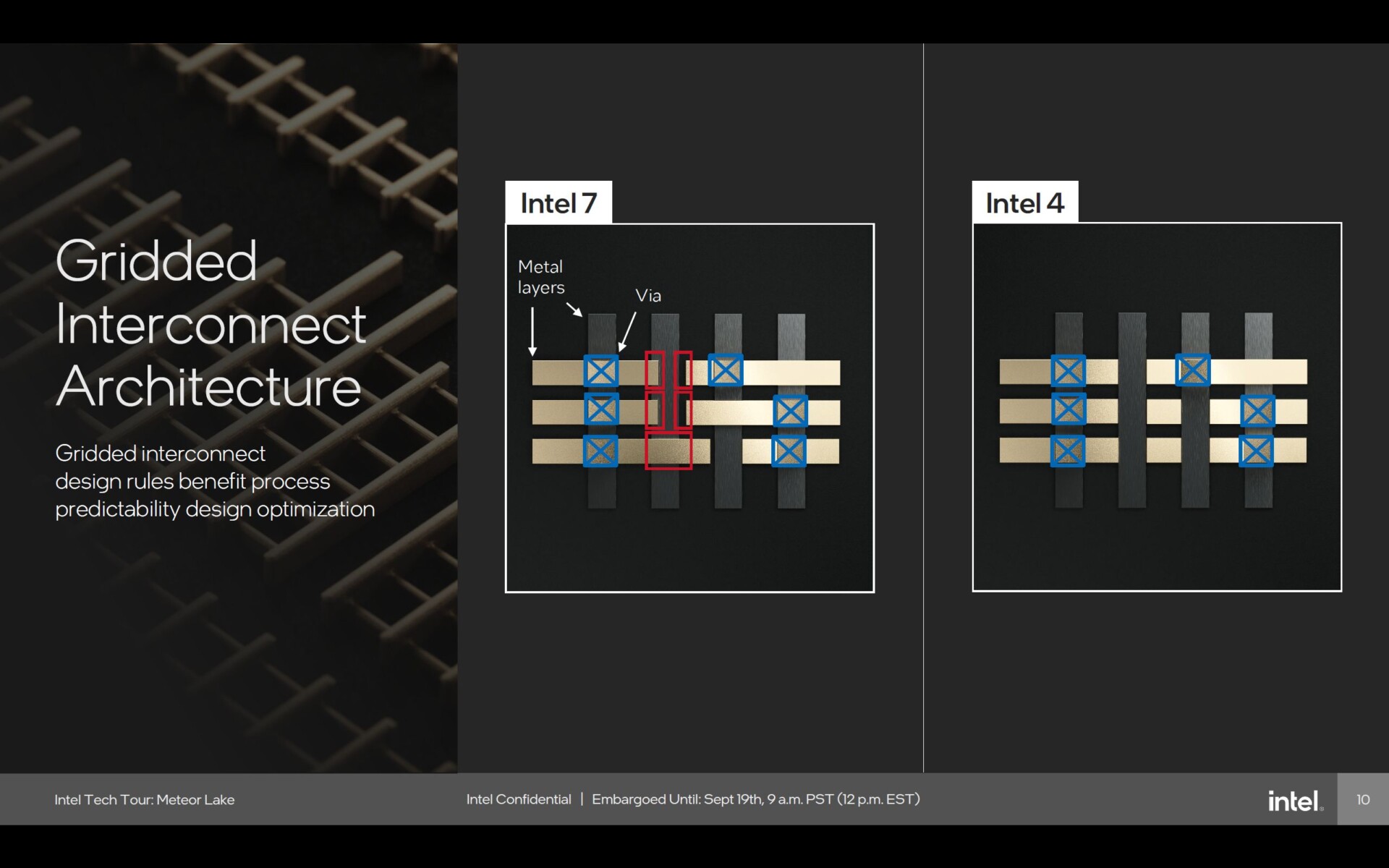
By comparison, Intel 4 process is significantly more compact than Intel 7 but able to output double the high-performance library scaling, thanks to tighter gate ETE spacing, as well as a 2nd generation Dummy gate removal, among other things.
Intel 4 in Meteor Lake also features a new Gridded Interconnect Architecture that allows the chipset to send and receive information, instructions, and signals far quicker than its predecessors, thanks to the way the layers are now stacked on top of one another.
With the Intel 4 process, this means that Intel is also able to create something entirely new Tile architecture for Meteor Lake.
Four Tiles, One Package
The Tile architecture within Meteor Lake refers to the four segmented tiles that make up the entirety of the new 14th Gen SoC. Those tiles are the SoC tile, Compute tile, IO tile, and Graphics tile. Now, as with all CPUs after Alder Lake, Intel’s processor utilise a hybrid architecture, combining a set number of high-performance cores (P-Cores) with a set of more power-efficient cores (E-Cores).
In regards to the latter set of cores and interestingly enough, Intel saw fit to install and additional two special, lower-power E-Cores within the SoC tile, isolating within an area aptly named the Low Power Island. These cores are designed to kick in when the laptop using the newly designed Meteor Lake processor is running, say, a Full HD video or set of videos in the background.
Basically, the Low Power Island E-Cores take over the work that the standard E-Cores would typically do, but with these SoC E-Cores now pulling duty, Intel says that this vastly improves the power efficiency of Meteor Lake chips.
Of course, both the P-Cores and E-Cores in Meteor Lake have also been improved, the former with performance efficiency, BW per core package, performance monitoring unit. For the E-Cores, you’re looking at higher IPC gains over its predecessor, AI acceleration improvements, and an enhanced branch prediction. More importantly, both core sets benefit from an enhanced Intel Tread Director.
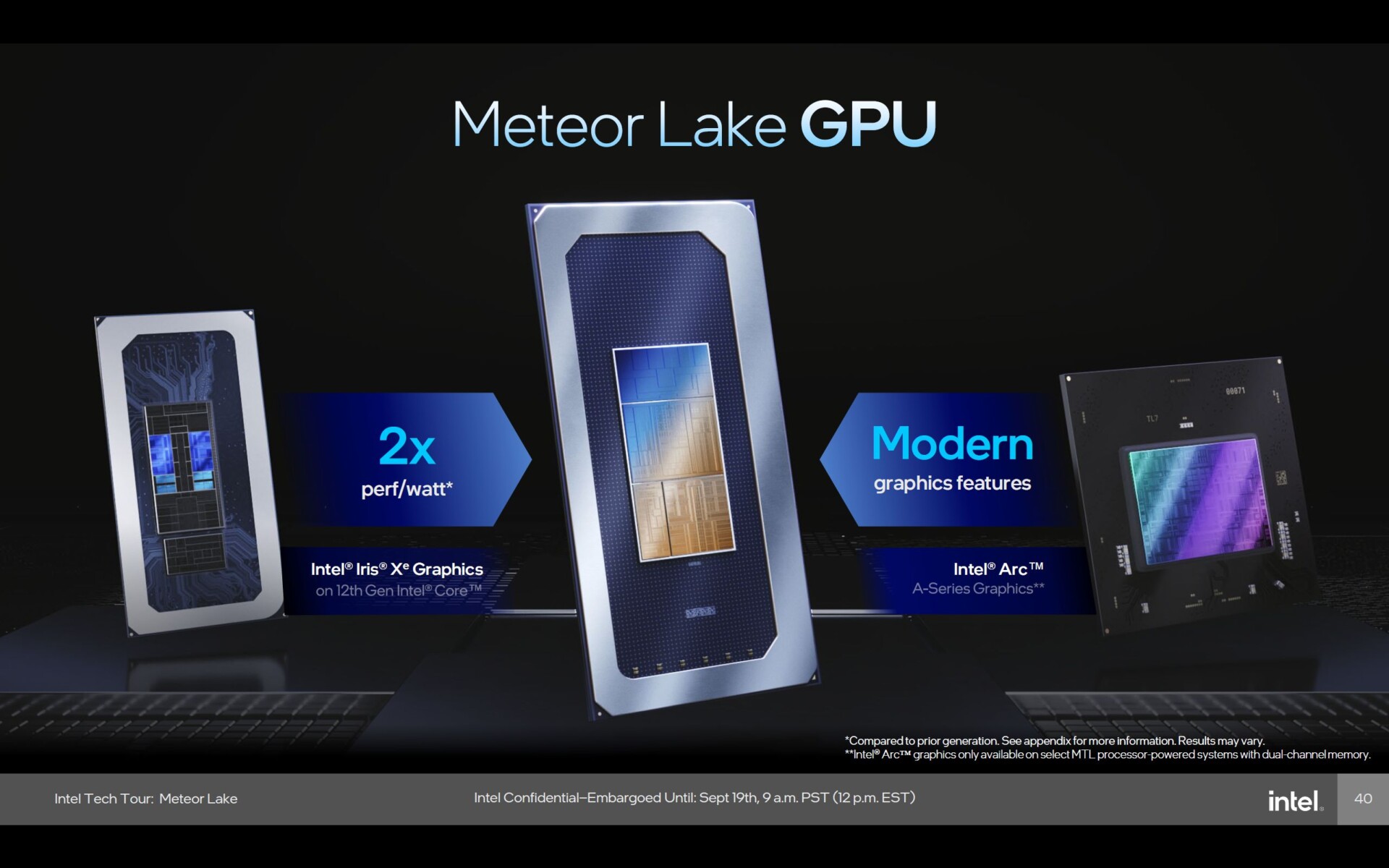
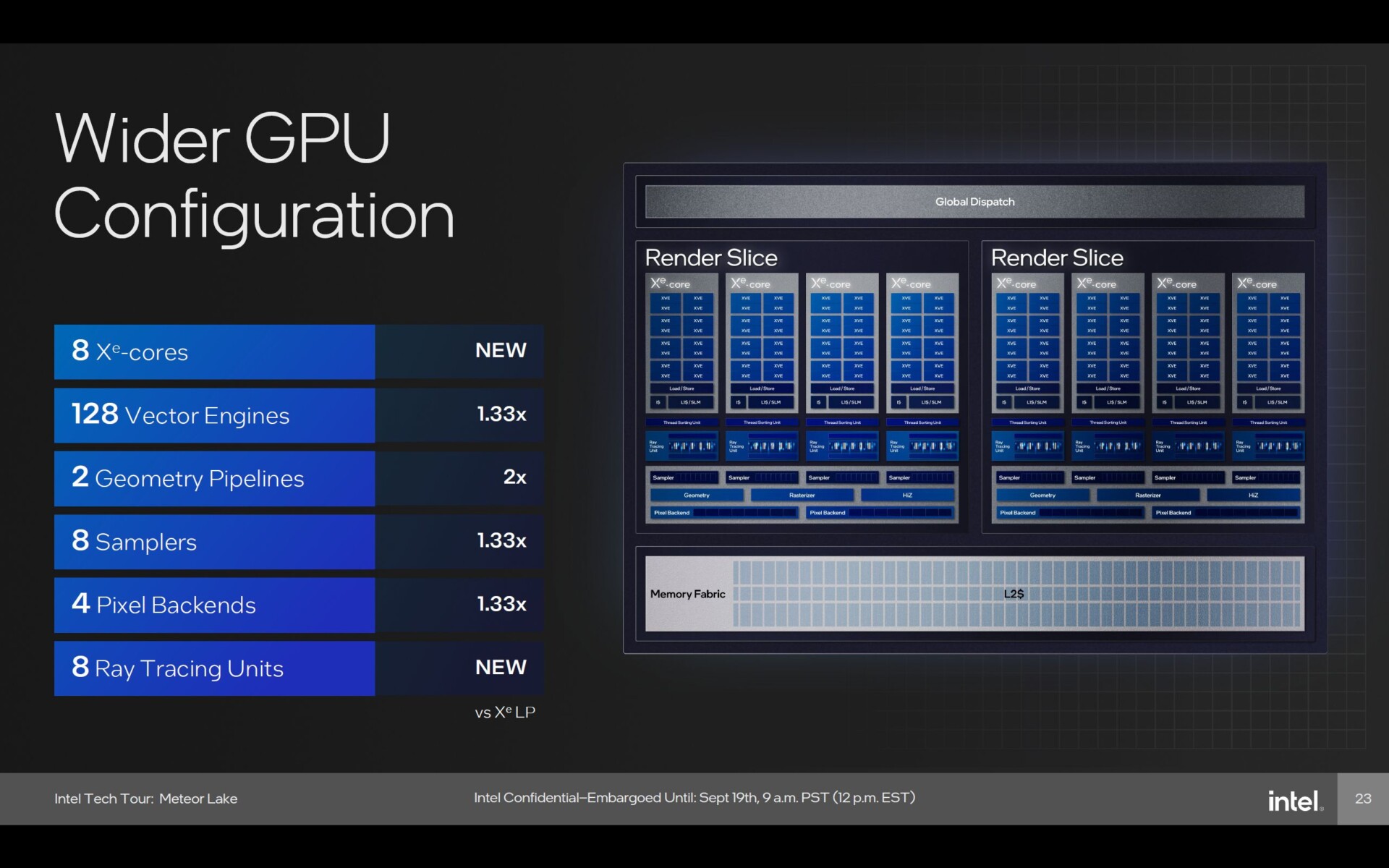
And then there is the graphics tile that, as most of you have clearly surmised, houses the integrated graphics core for Meteor Lake. More to the point, it’s the first mobile chipset to ship out with Intel’s ARC Xe cores. Using a disaggregated architecture design for the graphics core, it comprises the Xe LPG Graphics module, the Xe Media Engine, the Xe Display Engine, and an IO Tile for Display PHYs.
Specs-wise, it houses eight Xe Cores, 128 Vector Engines, two Geometry Pipelines, eight Samplers, four Pixel Backends, and eight ray-tracing units, the last one making it one of the first integrated GPUs within a mobile chipset to support the global illuminating feature. Oh, and there’s a Neural Processing Unit (NPU) embedded inside the chipset as well, serving as its AI Engine that helps to alleviate the workloads for the CPU, where and whenever needed.
Intel’s Meteor Lake chipset will be available toasses starting 14 December.
Follow us on Instagram, Facebook, Twitter or Telegram for more updates and breaking news.



